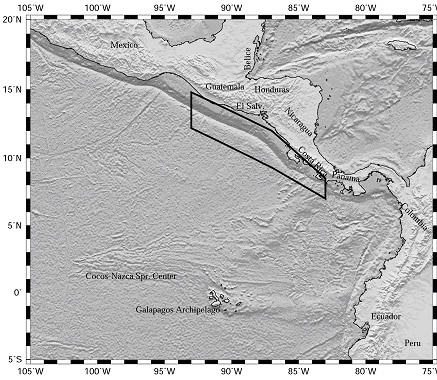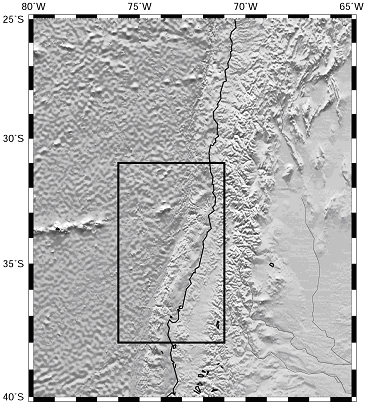 Web Content Display Web Content Display
Material input and tectonic behavior during plate subductionThis subproject aims at understanding the interplay between active tectonic processes and fluid flow at convergent margins and incoming oceanic lithosphere using a multidisciplinary approach. A major objective is to contribute to quantify processes of material (mass and fluids) transfer between subducting and overriding plates along the plate boundary. A second main goal is to study deformational processes during bending of oceanic lithosphere at trenches.
Fig. A1-1: Bathymetric and TOBI and DTS-1 sidescan sonar coverage at the Middle American continental margin. In addition, we will study the bending-related deformation of the incoming oceanic lithosphere subducting at those two trenches. This type of deformation leads to a profound transformation of the chemical and mechanical properties of the incoming oceanic plate by currently poorly understood and quantified processes.
Fig. A1-2: Bathymetric and TOBI and DTS-1 sidescan sonar coverage at the Middle American continental margin. To study the interplay between tectonics and fluid flow we will use a wide range of geophysical and geological methods. Multibeam bathymetry and side-scan sonar mapping of the seafloor and high-resolution subbottom profiler images will provide a detailed picture of the neotectonic structure and fluid-flow related features of continental margins and incoming oceanic plates. We intend to obtain the most possible complete inventory of fluid-flow related features along the margins. These include mud diapirs, carbonate patches, slump scars and deeply rooted active faults. We will collect ground-truthing data with deep-towed video cameras to characterize the different types of fluid-related extrusive manifestations and search for active fluid manifestations. In addition, we will study the distribution and types of slumps and slides and their failure mechanisms. |
 Events Events
Kieler Wissenschaftler fühlen den 'Puls der Erde' Wie funktioniert die Recyclingmaschine der Erde?Nach elf Jahren endet der Kieler Sonderforschungsbereich 574 zu Subduktionszonen Final colloquium of SFB 574 Teilprojekt ÖffentlichkeitsarbeitMEERESFORSCHUNG FÜR MICH UND DICH |
|
©SFB574 // Wischhofstrasse 1-3 // D-24148 Kiel // T. +49 (0)431 600 1413 // elange [AT] geomar.de







